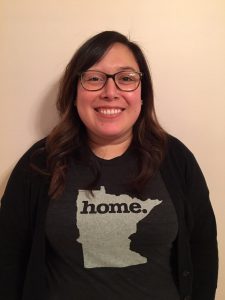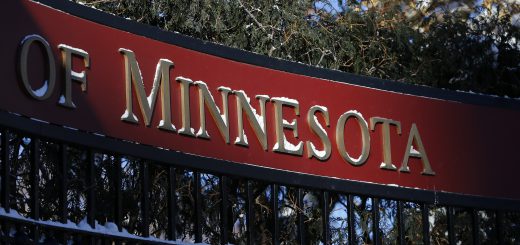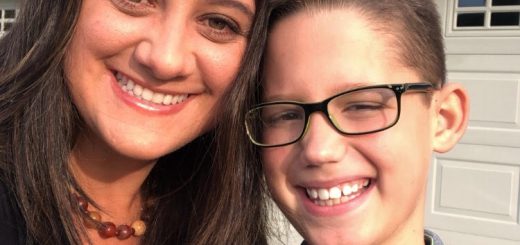Nontraditional paths bring unique mental health challenges
Their need for flexibility, plus their varied life experiences, don’t always fit with university services.
By Caitlin Anderson, Layna Darling, Laura Martinez and Kendall Van Horne
Gaby Bonnema, 30, experienced pushback from a professor when she sought flexibility due to mental health challenges stemming from her home situation.
Full-time worker and non-degree-seeking student Jenea Ylinen Fredrickson, 31, said she can’t get affordable treatment for her mental health conditions because she doesn’t qualify for the University’s health insurance plan.
Part-time student and full-time University worker Crystal King, 35, was told that she couldn’t get as many sessions as other students at Student Counseling Services because of her employee status.
For a majority of nontraditional students who struggle with mental health, those challenges are related to why they have not taken the usual routes through college, according to an AccessU Nontraditional Paths survey.
Yet once these students arrive at the University, their decisions to take classes part time or to work full time, as well as their need to deal with outside strains imposed by their disabilities and life conditions, end up creating unique burdens for these students.
Meanwhile, the University’s system, from its eligibility standards to the resources it offers, isn’t always designed to serve them or easy to navigate. At the very least, some say, it builds a unique resilience and adaptability.
Jeff Olsen-Krengel, an enrollment adviser in the College of Continuing and Professional Sciences, said nontraditional students aren’t introduced to these resources at an early stage, as traditional students are. As a result, they may not always understand what resources are available to their unique situation.
“They may know what they need, but they don’t know where to go,” he said.
Unique struggles
When 35-year-old Erin Swanson returned to college in 2014, she found it tough to balance working, studying, owning a home and managing her obsessive compulsive disorder. OCD, an anxiety disorder, presents itself differently in everyone, and for her, it made her feel an overwhelming responsibility to her schoolwork.

“Sometimes I do over-focus on school way too much,” said Swanson, a nutrition student at the University. “When I started going back to school, I wasn’t great at managing school and trying to have other things in my life. I was basically just working and studying and working and studying.”
Part-time student King said that the isolated nature of being a nontraditional student contributes to her depression, anxiety and panic attacks. Commuting via light rail from St. Paul to the University, as well as finding her way to classes on the sprawling East and West campuses, has been tough, she said.
“I don’t like to go places by myself, so going to class and stuff just makes it harder and finding the resources to understand that has been kind of difficult,” she said. “It’s anxiety-inducing. It’s a lot harder being a nontraditional student because I don’t have the campus life like everyone else has.”
Challenge to find resources
Finding adequate resources can also be a challenge for nontraditional students, particularly those who are non-degree-seeking.
Sometimes they don’t qualify for services such as health insurance. Or because information might not be clear about what they should do to qualify, they might not do what they should to prepare themselves for needs that arise during a semester.
Since last fall, 31-year-old Jenea Ylinen Fredrickson has been taking a few required classes part-time before she can start a graduate program at the College of Education and Human Development. Until COVID-19 put a hiatus on her two different jobs, she also worked between 48 and 60 hours per week.
She has anxiety and ADHD, but she said she is currently not being treated because she cannot afford it. Her status as a non-degree-seeking student means she is not eligible for the Student Health Benefit Plan, and neither of her two jobs give her health benefits.
“Having that nontraditional status and not being degree-seeking, not having access to some of the stuff that other students have access to is a detriment to some of my anxieties about classes and how I am doing,” she said.
Sometimes such situations stem from misunderstandings or misreading of policy. Boynton, for example, is open to any students who pay the student services fee and have some form of insurance, despite some confusion on official eligibility laid out on their website.
Had Fredrickson known about the financial fallout of COVID-19, she said she would have paid the student services fee, which would qualify her to have the student healthcare plan. She can’t do so now for financial reasons, she said.
Even if they are prepared, if demand is high, sometimes those students can find themselves waiting to get treatment.
King, who is a full-time University employee and a part-time psychology student at the University, said her status as both an employee and student has been a barrier when it comes to accessing mental health resources on campus.
While students are allowed 15 free counseling sessions each year and 25 total over the course of their college career, King was told she was only entitled to between six and eight sessions because of her employee status.
“It made me really upset … I don’t think they should not include somebody just because they work there as well,” King said. “When you get turned away from one place, it kind of makes you not want to seek out another. So it was really hard for a while.”
Andrew Kroska, the principal office and administrative specialist in Student Counseling Services, said of King’s situation that it’s possible the restriction could have had something to do with the University’s employee benefits.
“I don’t know, obviously, the full situation,” he said. “The thing is that with the benefits that the University offers, it might interact or mix differently with student benefits. So that might be what happened.”
Kroska said that SCS aims to be as flexible as possible with anyone who is enrolled as a student. SCS offers services for mental health, academic and career counseling to students, all free of charge and without a need for insurance. These resources are available to both full-time and part-time students, including non-degree-seeking students, he said.
“We serve the full entire student population as much as possible. The only time that we would not be able to see somebody would be if they are not a student,” Kroska said. “But we’ll still at least be able to do an initial consultation, which is the first meeting. Then the intake counselor can go ahead and refer you to other resources.”
Kroska said SCS is, however, constrained by high demand for its services. SCS has a waiting list, but students are removed from the list after two weeks, and after that point SCS works to connect them with other resources.
“I think every semester there’s a certain point where all the counselors’ schedules are pretty much booked,” Kroska said. “For being able to serve our student population, we don’t have enough counselors. We are spread thin.”
Working with faculty
Nontraditional students often encounter bureaucratic obstacles that other students may not experience due to their unique situations.
King, however, remains disappointed she could not receive better services from SCS. She said she ultimately found relief from her stresses through the Disability Resource Center (DRC), where as both an employee and a student she received an accommodation letter to present to her instructors each semester requesting flexible deadlines or attendance because of her documented disabilities. The DRC has also helped her bring her support dog to class and work.
“I was tired of being told that I can’t get the help that I needed,” King said. “I turned to the Disability Resource Center because the other mental health resources were only for students who don’t work full-time at the U, is what they told me. I don’t think that’s fair because we have twice the burden.”
For some nontraditional students, DRC isn’t an option in certain situations.
Gaby Bonnema, who works full time and had previously delayed enrollment, has not required help for a mental health disability while at the University. While she knows she will likely have to miss a lecture at some point due to her full-time work and her responsibilities as a caretaker for her family, she says she always tries to establish a relationship with professors.

This usually works and her professors have been very understanding, she said, until last semester when a personal crisis with her husband caused her to miss a week of school.
“I couldn’t bring myself up to go to class,” she said. When she talked to her professors, she said one allowed her to make up the work, while the other told her that her grade would be lowered if she missed another class.
“She was not being very flexible. She said I should talk to the [Office for] Conflict Resolution ,” Bonnema said. When she went there, they told her that her situation did not meet the criteria for a facilitated resolution, she said. “What I was going through, during those times of hyper-anxiety and depression and things like that, was not enough for them to step in.”
So instead, with the support of another professor and her adviser, Bonnema said she was able to resolve the situation.
“I honestly was thinking about just taking a break from school that semester. I thought, well, I don’t think I’m going to be able to pick myself up”, she said.
COVID-19 & the new normal
COVID-19 brought additional difficulties to many nontraditional students’ mental health, especially when it comes to the transition to online classes.
Student Counseling Services was forced to go virtual, meaning they could no longer offer group sessions and were unable to offer counseling to people who went home to another state due to state law, Kroska said.
Classes too, moved to Zoom instruction, which can be challenging for those with mental health struggles.
“I have taken online classes before, and online classes are not something that I work really well with,” Fredrickson said. “I’m also dealing with untreated anxiety and ADHD, so online classes, especially, aren’t great.”
For Swanson, the pandemic brought stress both in and out of the classroom. As a patient access services representative in the emergency room at the MHealth Fairview’s University of Minnesota Medical Center, Swanson is on the frontlines, which she said is terrifying and deterring her from her usual shiftload.
“I usually pick up a lot of shifts, but I’ve been working less,” Swanson said. “I’ve decided not to pick up any shifts in April because I really don’t want to be there.”
At the same time, however, the move to online has also eased other stresses, especially by ushering in easier access to telehealth appointments with therapists.
“Telehealth may be making things a bit easier,” said Risa Roth, president of the University’s Active Minds supportive mental health group, in an email.
Sophia Vinogradov, head of the university’s Department of Psychiatry, said that although it’s true nontraditional students bring unique mental health struggles, the group should not be stigmatized by this. Resilience is also something they have cultivated, which has helped them pursue their path at the University.
“I do think these are people who probably exhibit increased resilience factors as well as increased sense of stress and anxiety,” Vinogradov said. “In some sense … they actually deal better with the normal challenges and stresses that life throws our way for all of us.”



